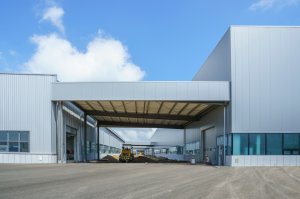Heating technology is shifting from purely mechanical equipment to intelligent ecosystems that sense, learn, and respond in real time. Smart heating systems now blend advanced controls, integrated sensors, and connected software to deliver precision comfort while conserving energy.
This evolution promises measurable gains for homeowners, yet it also changes the way repair, maintenance, and long-term reliability must be approached. As the industry moves forward, both technicians and homeowners need to understand the opportunities and obligations that come with smarter heat.
Advancing Intelligence and Everyday Comfort
Modern systems do more than obey a thermostat setting. Through occupancy detection, geofencing, and adaptive schedules, they anticipate when and where heat is needed, trimming energy use without sacrificing comfort.
Cloud connectivity extends those capabilities by enabling continuous optimization and remote feature updates. As these capabilities become standard, the line between heating equipment and home IT blurs, creating new expectations for uptime, data accuracy, and service responsiveness.
Balancing Efficiency and Repair Complexity
Efficiency gains are compelling, but they are only sustainable when the entire system is healthy. A struggling sensor, outdated firmware, or miscalibrated control can undermine energy savings as surely as a clogged filter or failing blower. Repair considerations therefore expand from the heat exchanger and ductwork to include diagnostics for software, networking, and power quality.
The smartest systems are only as reliable as their least maintained component, which makes comprehensive tune-ups essential rather than optional.
Elevating Diagnostics and Remote Support
Connected equipment changes the troubleshooting timeline. Instead of waiting for a noticeable failure, analytics can flag drift in performance, rising runtime, or unusual temperature swings before comfort is compromised. Remote diagnostics allow technicians to review fault histories, check firmware levels, and verify sensor readings prior to rolling a truck, which often shortens appointments and improves first-visit resolution.
Nevertheless, remote insights must be paired with on-site verification. Airflow measurements, combustion analysis, and safety checks still require hands-on expertise to confirm what the data suggests.
Prioritizing Cybersecurity and Data Integrity
With connectivity comes responsibility. Smart heating involves data about occupancy patterns, energy usage, and location, so protecting that information matters. Secure networks, encrypted communication, and disciplined password practices should be treated as part of system commissioning.
Firmware and app updates close vulnerabilities and improve stability, but they also require a plan to ensure compatibility across devices. Thoughtful network segmentation and routine credential changes reduce risk without adding noticeable friction for users.
Preparing Technicians for Hybrid Skill Sets
Service teams now need fluency in both mechanical systems and digital tools. Interpreting sensor data, verifying control logic, and updating firmware sit alongside familiar tasks like tightening electrical connections and checking gas pressure. Training must keep pace with evolving platforms, from manufacturer-specific apps to universal diagnostic tools.
Providers that invest in this dual competency will be better equipped to deliver dependable results; many shops, including A&K Service Inc., are already building processes that blend HVAC fundamentals with connected-system troubleshooting to meet that expectation.
Supporting Homeowners with Proactive Maintenance
Smart equipment encourages a shift from reactive calls to proactive care. Seasonal inspections should verify sensor placement, calibrate controls, test emergency shutdowns, and confirm that connected features are functioning as intended. Homeowners benefit from simple routines, such as replacing filters on schedule, confirming app permissions after phone upgrades, and ensuring the home network remains stable.
When owners understand what their system is trying to achieve—consistent comfort at the lowest necessary energy input—they are more likely to participate in habits that keep it performing at its best.
Anticipating Innovation and Practical Implications
The next wave of heating intelligence will likely feature broader electrification, tighter integration with home batteries and solar, and more granular zoning. Heat pumps paired with smart controls will coordinate with time-of-use rates to shift heating loads to economical periods.
Self-diagnostics will grow more sophisticated, automating service tickets when performance crosses predefined thresholds. As capabilities expand, documentation and interoperability will matter even more. Clear labeling, accessible service ports, and standardized data sharing will help technicians keep systems reliable while minimizing disruption to daily life.
Aligning Expectations with Lifecycle Reality
Every system, no matter how advanced, will require repairs over its lifespan. What changes with smart heating is the ability to predict needs and schedule work strategically. Homeowners should weigh the cost of advanced features against expected maintenance, recognizing that software-supported performance often depends on timely updates and calibrated sensors.
When expectations are aligned with lifecycle realities, smart systems deliver on their promise: quieter operation, steadier comfort, and lower total energy use over time.
Smart heating systems are ushering in a future where comfort is adaptive, energy is optimized, and service is predictive. To capture those benefits, repair considerations must expand to include digital diagnostics, secure connectivity, and disciplined maintenance.
The most successful outcomes will come from a partnership between informed homeowners and hybrid-skilled technicians who can navigate both circuitry and software with equal confidence. As these systems become the norm, thoughtful care will keep the promise of smart heat intact—reliable, efficient, and ready for whatever the season brings.










